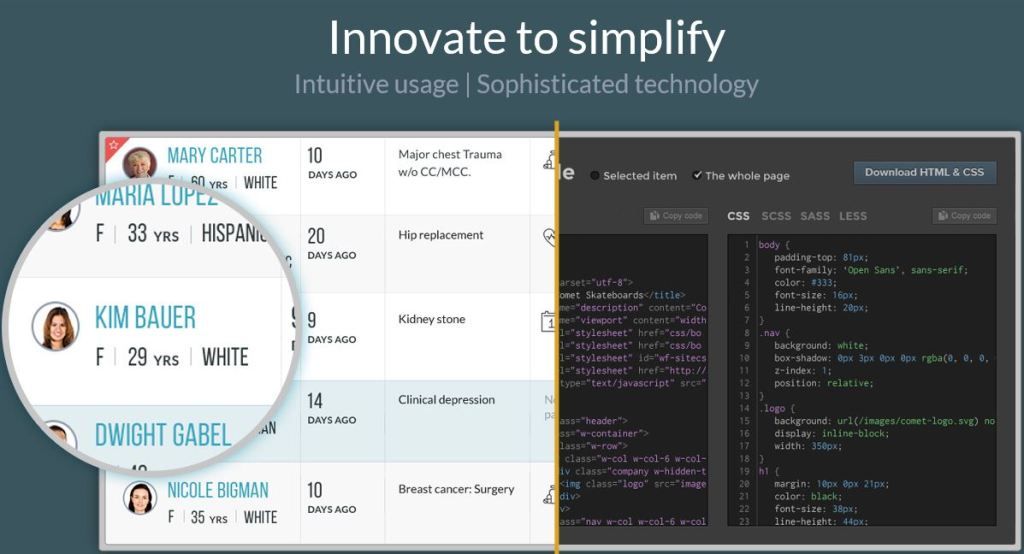 It's that time again! The December 2008 issue of Population Health Management, that journal formerly known as Disease Management is about to land on your desk. But you're busy. Those e-mails are overwelming your in-box. The December '08 let-it-wait-till-January-'09 management decisions are looming. Do you crack the cover of that journal and if so, which articles are of interest to you? More importantly, is there one you can quote or comment on at that staff meeting tomorrow to the amazement of your colleagues and boss?
It's that time again! The December 2008 issue of Population Health Management, that journal formerly known as Disease Management is about to land on your desk. But you're busy. Those e-mails are overwelming your in-box. The December '08 let-it-wait-till-January-'09 management decisions are looming. Do you crack the cover of that journal and if so, which articles are of interest to you? More importantly, is there one you can quote or comment on at that staff meeting tomorrow to the amazement of your colleagues and boss?Is the company you work at self insured? You’re in luck because your employer can be like DIRECTV. They distributed an employee health risk assessment in April of 2003 with a $15 gift certificate incentive for completion followed by a $300 credit for their health insurance if a) low risk or b) moderate or high risk and willing to participate in up to 6 lifestyle-health improvement programs. The programs included in-person as well as remote coaching. $15 was enough to get a 60% baseline participation rate. There was a follow up survey in 2005. This report focuses on 543 persons that completed both surveys. As expected there was ‘risk’ shifting over time among the low, medium and high risk populations, but the downhill flow of persons from high to medium and from medium to low exceeded the uphill flow. A reduction in risk was associated with a reduction of 3.5 absences per year versus a comparison group. Unfortunately there is little information on the penetration of this program into the entire DIRECTV workforce: is 543 employees enough to make a difference for an entire company? What’s more frustrating, the authors state we need to wait for another publication to find out if health care insurance claims expense was reduced.
Roger Mazze, Margaret Powers, Harry Wetzler, Cori Ofstead: Partners in advancing care and education solutions study: Impact on processes and outcomes of diabetes care.
Ramsey Farah, Kyahn Kamali, Jeffrey Harner, Ian Duncan, Thomas Messer: Random fluctuations and validity in measuring disease management effectiveness for small populations.
Want to know if your disease management program saved money? Well, if the number of persons in the program is small, the ability to spot any meaningful savings is decreased and gets worse as the number of participants goes down. As a result, you may need to a) hire an actuary or b) read this paper or c) do both. If you read this paper, you’ll be better able to understand using 1 vs. 2 standard deviations, 1 or 2 sided testing, admission based savings calculations, truncation at a $100,000 stop loss limit and various external populations for non-chronic trending. After reading this paper, the DMCB thinks you'll need to hire an actuary anyway.
Cynthia Hartsfield, Eli Korner, Jennifer Ellis, Marsha Raebel, John Merenich and Nancy Brandenburg: Painful diabetic peripheral neuropathy in a managed care setting: patient identification, prevalence estimates and pharmacy utilization patterns.
Karen Fitzner, Deborah Greenwood, Hildegarde Payne, John Thomson, Lana Vukovljak, Amber McCulloch and James Specker: An assessment of patient education and self management in diabetes disease management – two case studies.
Thomas Blakely and Gregory Dziadosz: The chronic care model for behavioral health care.
This is a report from an outfit called ‘Touchstone innovare’ who implemented a behavioral version of the chronic care model in their Michigan mental health agency. Frankly, this is a difficult paper to read because there’s no description of the workings of the agency or the disease burden in the population. There was a control group but they were contaminated by being the same agency. That being said, a pre-post analysis showed an improvement in multiple measures of psychological well being and an astounding 39% reduction in inpatient days. This is a good start, but much work needs to be done before we really know how the chronic care model will work in outpatient behavioral medicine.












No comments:
Post a Comment